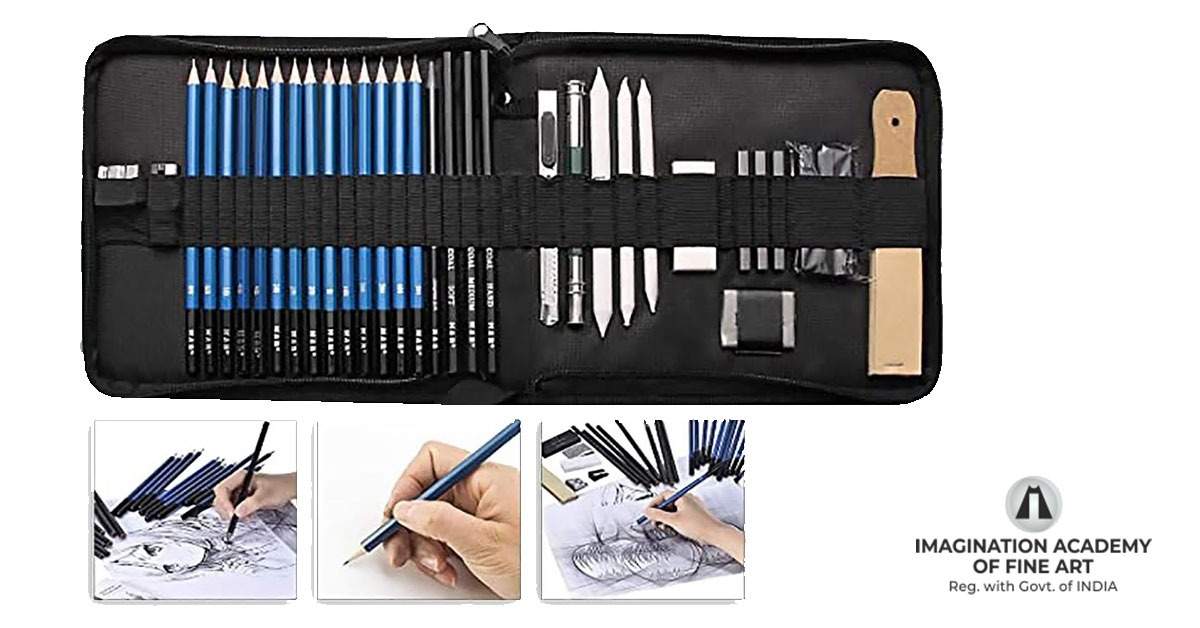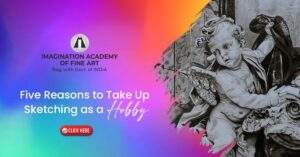Most of us began illustrating when we were children. And, those were the days when we weren’t used to place much value on an art tool kit, perhaps not even take it into account. A regular pencil and some notebook paper would frequently “do the thing.”
However, as we evolved and progressed as artisans, the art tool kit we used became increasingly significant. And along the way, it became clear that high-quality supplies for artists translated into high-quality work, thus making sense as to why aspiring artists would want to work with the greatest and essential drawing supplies available.
So, if you are getting serious about your artwork, no matter your age, you should also be getting serious about the art materials and instruments you use.
In this blog, we list the basic art tool kit along with the essential drawing supplies and equipment for artists who are just getting into sketching. So, without further ado, let’s begin!
Top-Notch Drawing Pencils
High-quality drawing pencils are the most apparent prerequisite. When it comes to drawing pencils, each artist has a favorite brand. It’s impossible to predict which brand will become your favorite unless you sample a few.
Sketchbook
A sketchbook is one of the most essential tools for any artist. And, we should clarify that we are talking about an “active sketchbook,” one that gets attention on a daily basis. Anyone may “own” a book with blank pages of sketching paper. But the one who deliberately seeks it out – on a daily basis – is the one with worth.
Since a sketchbook is advised for everyday practice, it is critical to select one that is long-lasting and contains sufficient pages for all of your ideas. We recommend a sketchbook with a hardback to withstand continuous usage and travel. A hardcover maintains the corners of the pages inside clean and helps maintain the pages flat if you use mixed media applications.
Top-Notch Drawing Surfaces
A drawing/sketch may be created on any surface, but it’s the texture of that surface that is sometimes as significant as the material employed on it.
Hence, while selecting a drawing surface there are a few factors that you may want to consider that may affect the end product.
“The Tooth” – The paper’s texture might be considered the surface’s “tooth.” The texture of the paper influences how the sketching substance adheres to the surface. Heavier textures generate lines that seem “broken,” whereas softer textures provide smoother lines and value gradations. Some artists like more pronounced textures, while others prefer a smooth texture.
Paper Weight – The weight of the paper relates to how much a ream (500 sheets) of the paper weighs. For most papers, the weight is proportional to the thickness. However, it should be noted that certain sheets appear heavier but are fact thinner. For example, 80 lb paper is normally thicker than 60 lb paper and 100 lb paper is heavier than 80 lb paper.
Acid-Free – Without getting into the scientific nitty-gritty, “acid-free” paper will withstand “the test of time.” This paper does not yellow over the period and is more robust to fading caused by UV light exposure.
Now with these factors in mind, here are a few papers that you might like to try…
Drawing Paper – Medium tooth paper suitable for drawing with various drawing mediums such as graphite, charcoal, and colored drawing pencils. There are several drawing paper possibilities, however, Strathmore sheets are highly recommended.
Charcoal Paper – Charcoal paper is a heavier, lightweight tooth paper that is almost semi-transparent. Great for adding texture. (Charcoal paper may be utilized with a number of materials other than charcoal. It’s perfect for graphite sketches.)
Bristol Paper – A thicker, smooth toothed paper (think cardstock). This paper is fairly stiff and is ideal for making subtle gradations of value or intricate linework with ink.
Erasers
Erasers are used to correct mistakes, right? Consider again. Erasers may also be useful for producing marks. Each eraser leaves a different mark and should be used as needed depending on the drawing medium.
Here are some suggestions for erasers…
Rubber Eraser – This is your normal graphite eraser. This eraser removes material from the surface by using friction.
Kneaded Eraser – This eraser pulls material off the surface rather than removing it by friction. It may be dragged and shaped into various shapes to make precise markings. This eraser becomes filthy with use, but it may be cleaned by tugging and kneading.
Gum Eraser – This eraser works well for removing media from easily torn surfaces. A gum eraser removes the medium by friction while crumbling and maintaining the surface.
Vinyl or Plastic Erasers – These erasers are the hardest of the lot. They have the ability to wipe practically everything. But be warned: if you’re not careful, this eraser might rip the paper.
A Reliable Pencil Sharpener
Pencils must be sharpened with a good pencil sharpener. Using a low-quality sharpener might run you out of pencils in a matter of seconds.
Charcoal
No artist’s toolbox is complete without charcoal. Charcoal has a wider variety of value and mark-making possibilities than graphite. The technique in which markings are created varies as well.
Charcoal is available in both stick and pencil form. Typically, charcoal is either “vine” or “compressed” into sticks. Vine charcoal is softer and leaves lighter impressions than compressed charcoal, which is more concentrated and leaves darker traces.
Drawing Pens/Ink
When we draw with ink, we are compelled to learn the usage of lines. After all, the line is utilized to create the appearance of shape, texture, and light. Technical sketching pens are inexpensive, easy to locate, and portable, making them ideal for any aspiring artist.
Blending Stumps
Blending stumps are necessary for artists who wish to smear or shift material around on a surface. A blending stump lets the artist produce value gradations without introducing finger oils, which may make a drawing appear unclean or uncontrolled.
Blending stumps also allows the artist to produce gradations and seamless applications of value in regions of detail that would otherwise be difficult to reach.
Top-Notch Colored Pencils
Colored pencils may be found anywhere. They are available for purchase from almost any place. However, this does not imply that every colored pencil brand will produce the greatest results. Quality is important, as is the sort of colored pencil you use.
Artwork Storage / Portfolio
Every artwork of yours is significant, even the pieces you’d want to keep private. They must be treated with care and stored in a way that ensures their preservation and protection.
There are numerous alternatives for archiving artwork, but the most popular is a portfolio.
However, by no means, are all of these art materials and instruments essential for serious drawing. All you really need is a mark-making material and a surface. But, if you’re serious about your artwork, you’re presumably also serious about your art tool kit and the art materials and instruments that come along, and thus, this list contains what we believe to be “The Necessities.”




